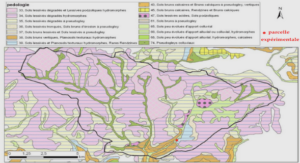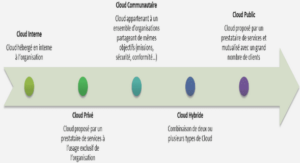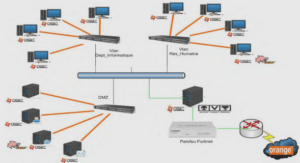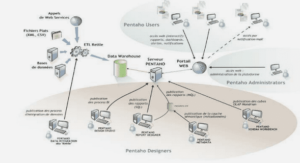Il y a un siècle les scientifiques ont identifié un nouveau type de messagers venant de l’espace : les rayons cosmiques. Ce rayonnement est en fait constitué de particules (essentiellement des protons) de très haute énergie (jusqu’à 10²⁰ eV, une énergie macroscopique) qui bombardent la Terre en permanence. Ces particules interagissent parfois avec notre corps, provoquant éventuellement des mutations cellulaires : elles sont l’une des sources de mutations aléatoires dans la théorie de l’évolution de Darwin. C’est en général la seule raison pour laquelle l’homme de la rue en a (parfois) entendu parler. Pour l’astrophysicien professionnel, comprendre ces particules est absolument nécessaire, quand on sait qu’elles remplissent toute la Galaxie avec une densité d’énergie du même ordre de grandeur que la lumière des étoiles ou le champ magnétique. Elles jouent un rôle clé dans de nombreux domaines de l’astrophysique, de la chimie des petites échelles jusqu’à la dynamique des grandes échelles, avec la production d’une grande partie de l’émission haute énergie de l’univers.
Dans cette thèse (source : https://www.chatpfe.com/) nous nous intéressons à la production des rayons cosmiques : quels sont les mécanismes d’accélération, où sont les sources ? Nous nous restreignons ici aux rayons cosmiques dits galactiques, ceux qui sont bien confinés par le champ magnétique de la Galaxie et qui y sont probablement produits. On pense que leurs sources principales sont les restes de supernovae (RSNs). Les supernovae libèrent de grandes quantités d’énergie, notamment d’énergie cinétique sous la forme d’un choc qui balaye le milieu interstellaire ; et on a identifié un mécanisme, appelé accélération diffusive par onde de choc (ADOC), qui permet à un tel choc d’accélérer efficacement des particules ambiantes jusqu’à de très hautes énergies – grâce à la présence d’un champ magnétique turbulent qui fait diffuser les particules. Ce modèle standard a permis de comprendre les grandes lignes de la production des rayons cosmiques, mais il rencontre toujours d’importantes difficultés lorsqu’on s’intéresse aux détails. L’une des raisons pour lesquelles l’ADOC a été rapidement populaire est qu’elle explique naturellement la formation de spectres en loi de puissance (comme observé) ; toutefois ce résultat n’est valide qu’en régime linéaire, alors qu’il est bien connu maintenant que la rétroaction des rayons cosmiques produit des chocs modifiés (avec un précurseur) et des spectres modifiés (concaves). L’ADOC est un mécanisme très efficace et en fait inévitable, cependant il n’est toujours pas du tout certain que les RSNs (isolés) peuvent réellement accélérer les rayons cosmiques galactiques jusqu’aux cassures observées dans leur spectre (le genou vers 10¹⁵ eV et la cheville vers 10¹⁷ eV). La composition observée des rayons cosmiques est en accord avec celle du milieu interstellaire moyen, néanmoins elle comporte un certain nombre d’anomalies”. Enfin il y a des preuves observationnelles de l’accélération d’électrons dans les RSNs, mais toujours pas de détection directe de protons de haute énergie dans ces objets.
Cosmic-Rays
History
Cosmic-rays have been discovered one century ago, which is both a quite late discovery given their central role in astrophysics and a quite old discovery given all the problems their understanding still raises. Their story has been told in many places, the introductions of Paul (2004) and Degrange (2004) make a short review and the reference book of Longair (1991) goes in much more details.
Discovery
The study of cosmic-rays started in the early twentieth century . At that time ionizing radiations were studied with electroscopes. A few people realized that their electroscopes were always spontaneously discharging even if they were protected from any visible radiation. They concluded that some kind of unknown ionizing radiation was present at the Earth surface, and supposed that it was coming from the Earth interior . But when Wulf made precise measurements on top of the Eiffel Tower, he observed that the discharging rate was decreasing more slowly with altitude than expected. To get a definitive answer, Hess made several balloon experiments from 1911 to 1913. He measured that above 1.5 km and up to 5 km the ionization rate steadily rises, proving that the ionization source is not into but above the Earth – most probably in space.
Before trying to identify the actual sources , the big issue was to figure out what this radiation actually was. This was the subject of vigorous discussions in the 1920s, opposing most notably Millikan, convinced that cosmic-rays were photons (it is him who coined the term “cosmic-rays”), and Compton, convinced that they were charged particles. The discovery of the influence of the Earth magnetic field on cosmic-rays between 1927 and 1933 proved that most of them are indeed charged – and thus are not photons, but matter. In 1938 Auger discovered “air showers” of particles, interpreted as the result of the impact of a very energetic particle (a cosmic-ray) on the Earth atmosphere. But not until the 1960s were scientists able to measure precisely the composition and energy of cosmic-rays .
Particle Physics
Not only cosmic-rays proved to be particles, but they teached us what particles are really made of: the science of particle physics greatly developed in the 1930s and 1940s through the study of the cosmic radiation. In cosmic-rays were found the positron (Anderson, 1932), the charged muons (Anderson & Neddermeyer, 1937), the charged pions (Powell, 1947), etc. In the 1930s the first human-made accelerators of particles were hardly reaching a few MeV . Today they reach the TeV . Although (impressively) 6 orders of magnitudes better, this is still at least 8 orders of magnitudes too short to compete with astrophysical sources… It is then no surprise that cosmic-rays are the center of a new and vibrant interdisciplinary field, known as “astroparticle” physics.
Observations
We give here a short review – which doesn’t try to be exhaustive – of the way cosmic-rays have been observed in the last 50 years, from space and from the ground, with direct and indirect method.
Detection of Highly-Energetic Particles
The conquest of space after World War II made it possible to detect directly cosmic-rays in space. In 1965 and 1966 the Russian satellites Proton I and II measured their energy spectrum up to 10¹⁴ eV. From 1979 to 1981 the American satellite HEAO-3 measured their composition, followed since 1991 by the ACE mission. Experiments in balloon (as first did Hess) are also still in use, such as the BESS mission. All this experiments rely on various techniques of particle and nuclear physics to collect particles and measure their energy, charge, mass, composition… The detectors are either gas-filled devices (proportional counters, Geiger counters, spark chambers) either solid state devices (semiconductors, scintillation detectors, crystals). They can be used up to energies of roughly 10¹⁵ eV. Above this limit cosmic-rays are detected through the secondary particle showers they generate in the atmosphere (following Auger’s work). This approach, developed since the 1950s, actually consists in using the Earth atmosphere itself as a detector. In that case one can either detect the secondary particles on the ground, as done by AGASA in Japan since 1990 and by Kascade in Europe since 1996, either detect the Cherenkov light induced by those supraluminous particles, as done by HiRes in the USA since 1994. The Auger observatory being currently built by an international collaboration in the Argentina pampa combines the two techniques on a giant surface of 3000 km² .
Detection of Highly-Energetic Photons
The progresses made in the observation of cosmic-rays are closely connected to the development of high-energy astrophysics, as high energy radiation is often the signature of high energy particles (and is sometimes observed thanks to the same kind of techniques). Accelerated protons produce γ-ray lines through various nuclear interactions (excitation, spallation, radioactive decay) and a γ continuum through collision on interstellar protons (pionisation). Accelerated electrons produce a γ-ray line through annihilation with positrons and a X to γ continuum through “collisions” with interstellar nuclei (Bremsstrahlung) and with ambient photons (inverse Compton). X-astronomy started in the 1960s and rose in the 1970s (with the Uhuru and Einstein satellites). γ-astronomy started in the 1970s (with the SAS II and COS-B satellites) and rose in the 1990s (with the CGRO satellite). Today the sky is extensively observed from space in X-rays by XMM-Newton, Chandra and Suzaku and in γ-rays by INTEGRAL, Swift, Agile (and soon GLAST). More recently (since the end of the 1980s) γ-astronomy has developed on the ground, relying on the same technique used for very high energy cosmicrays, that is detecting the air shower induced by very energetic photons. After the first attempts of the Whipple Observatory, HEGRA, CAT, CANGAROO, a new generation of observatories has risen: MAGIC, VERITAS, HESS (since 2002). To end this section we would like to note, first that high-energy radiation of course can’t be totally reduced to cosmic-ray physics, and second that cosmicrays produce important radiation at the other end of the spectrum too: the synchrotron emission from accelerated electrons in magnetized environments has been observed since the contruction of the first big radiotelescopes in the early 1950s.
|
Table des matières
Introduction
I Cosmic-Ray Acceleration
1 Cosmic-Rays
1.1 History
1.1.1 Discovery
1.1.2 Particle Physics
1.1.3 Observations
1.2 Phenomenology
1.2.1 Spectrum
1.2.2 Composition
1.2.3 Isotropy
1.3 Standard Model of Galactic Cosmic-Rays
1.3.1 Origin
1.3.2 Propagation
2 Diffusive Shock Acceleration
2.1 Ingredients
2.1.1 Shock Waves
2.1.2 Magnetic Field Waves
2.2 Linear Theory
2.2.1 Energy Gain in a Collision
2.2.2 Fermi Processes
2.2.3 Shock Acceleration
2.3 Non-Linear Effects
2.3.1 Cosmic-Rays Pressure
2.3.2 General Picture
2.3.3 Analytical Attempts
2.3.4 Numerical Simulations
2.4 Injection
2.4.1 Theory
2.4.2 Parametrization
2.5 Observational Support
2.5.1 Particle Acceleration
2.5.2 Non-Linear Effects
3 Multiple Shocks
3.1 Inter-Shocks Physics
3.1.1 Adiabatic Decompression
3.1.2 Escape
3.1.3 Second-Order Acceleration
3.1.4 Radiation Losses
3.2 Acceleration by a Sequence of Shocks
3.2.1 Linear Regime
3.2.2 Non-Linear Regime
II Numerical Simulations
4 Accelerating Particles: Coupling Hydrodynamic and Kinetic Theories
4.1 Fluid Dynamics
4.1.1 Finite-Volumes Scheme
4.1.2 Shock Setup and Boundary Conditions
4.2 Particles
4.2.1 Transport Scheme
4.2.2 Boundary Conditions
4.2.3 Injection Mechanism
4.2.4 Cosmic-Rays Back-Reaction
4.3 Test 1: a Modified Shock
4.3.1 Test Design
4.3.2 Test Results
4.3.3 Comparison with Previous Study
5 Resolving Diffusion Scales: Adaptive Mesh Refinement
5.1 Principle
5.1.1 The Problem: Diffusion Scales
5.1.2 The Answer: Adaptive Mesh Refinement
5.2 Scheme
5.2.1 Grids Design
5.2.2 AMR Algorithm
5.3 Test 2: Bohm Scaling
5.3.1 Test Design
5.3.2 Physical Results
5.3.3 AMR Efficiency
6 Running Multiple Shocks: Parallelization
6.1 Inter-Shocks Treatment
6.1.1 Downstream Spectrum
6.1.2 Adiabatic Decompression
6.1.3 Escape
6.2 Parallelization
6.2.1 In Space
6.2.2 In Momentum
6.3 Test 3: Multiple Shocks
6.3.1 Test Design
6.3.2 Physical Results
6.3.3 Parallelization Efficiency
III Superbubbles
Conclusion
![]() Télécharger le rapport complet
Télécharger le rapport complet





